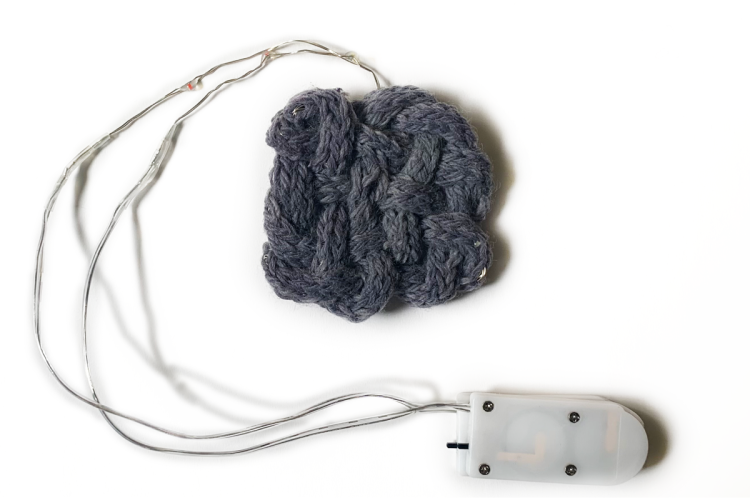ATLAS PhD students take home top student design awards from TEI’21

Sandra Bae

Fiona Bell
Bae, who won the Craft Award for her Cyborg Crafts e-textile swatch entry is co-advised by Assistant Professor Danielle Szafir and Professor Ellen Do, and she is a member of both the institute’s VisuaLab and ACME Lab. Mary Etta West, co-recipient of the Craft Award and a PhD student in computer science who collaborated with Bae on the Cyborg Crafts project, is also a member of the VisuaLab.
Bell, who won the Inspiration Award for her Undyeing Swatch project, is a member of the Living Matter Lab, directed by Assistant Professor Mirela Alistar.
The Undyeing Swatch utilizes a combination of visible Light Emitting Diodes (LEDs) and photocatalytic nanoparticles to diminish the color of organically dyed textiles. As such, this swatch explores ‘undyeing’ as a design process that utilizes light and dye as materials for controlled interaction. When the LEDs are turned on, the light activates the nanoparticles, which in turn break down the organic matter (the dye).

“This swatch provides a proof of concept for the ‘undyeing’ process, which I believe could be an interesting area of future exploration for HCI researchers and artists alike,” Bell said.
Cyborg Crafts blends techniques from the fiber arts with cyborg-inspired technologies (e.g., open-source biosensing EEG headsets and RFID implants). Second SKIN (Soft Keen INteraction), intended to support this practice, is a handmade collection of four modular soft wearable sensors—momentary switch, pressure sensor, pinch sensor, and a gesture-detecting, capacitive touch sensor— and a temperature-dependent dynamic display. Each sensor has a unique outer shell texture based on non-woven textile techniques, and each supports a different sense.

“This swatch was awarded the CRAFT AWARD for its well crafted visual effect which sets it apart from similar skin-like designs. The final sensors are indeed uncanny, yet a notable balance of playfulness offsets the often creepy nature of silicone skin, to make them compelling,” wrote one of the jurors.
Each year TEI invites students to submit physical examples of their craft and to communicate their experiments, expertise and approaches through its Student Design Challenge. The annual call is for the “small solutions that make projects possible.”
Publications
S. Sandra Bae and Mary Etta West. 2021. Cyborg Crafts: Second SKIN (Soft Keen INteraction). In Proceedings of the Fifteenth International Conference on Tangible, Embedded, and Embodied Interaction (TEI '21). Association for Computing Machinery, New York, NY, USA, Article 87, 1–3. DOI:https://doi.org/10.1145/3430524.3444705 (Salzburg, Austria (virtual) Feb. 14-19, 2021). [Craft Award]
Fiona Bell. 2021. The Undyeing Swatch. In Proceedings of the Fifteenth International Conference on Tangible, Embedded, and Embodied Interaction (TEI '21). Association for Computing Machinery, New York, NY, USA, Article 86, 1–3. DOI:https://doi.org/10.1145/3430524.3444704 (Salzburg, Austria (virtual) Feb. 14-19, 2021). [Inspiration Award]


